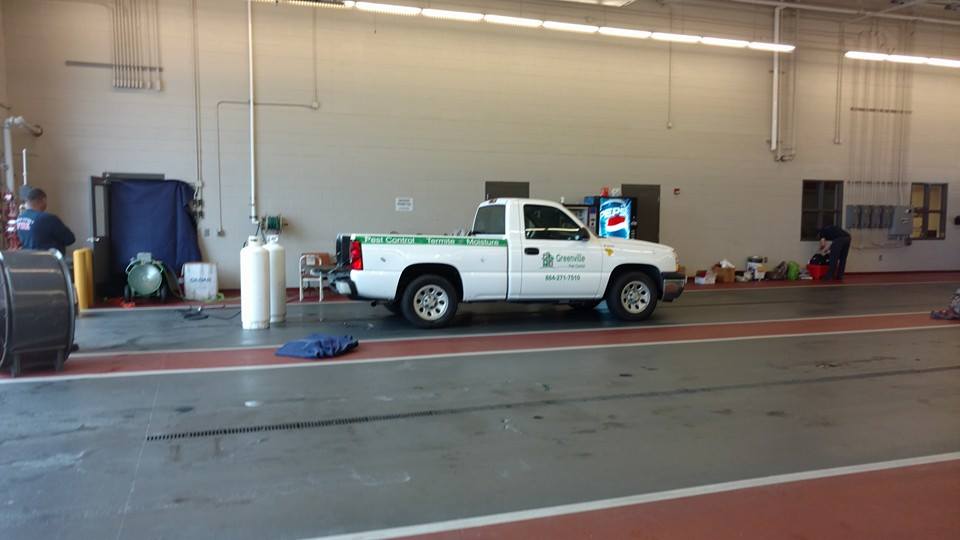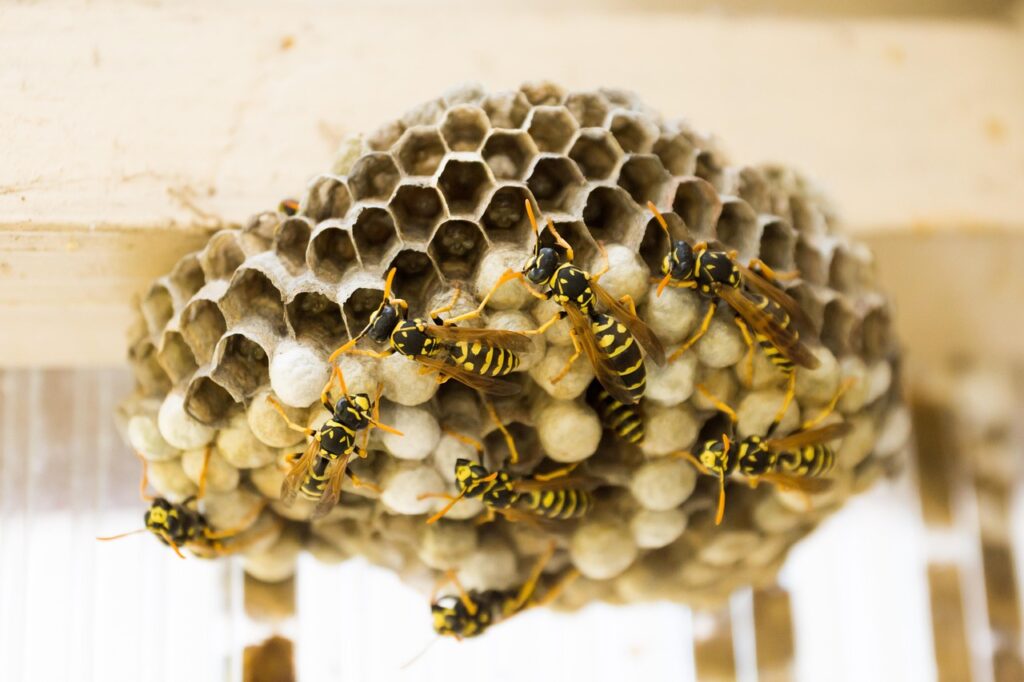Warm weather brings outdoor activities, blooming gardens, and unfortunately, stinging insects.
However, they’re a reality that you can do away with if you apply the necessary stinging insect control measures, including working closely with a professional for prevention and addressing infestations.
You can follow these tips to deal with stinging insects at your home without putting yourself at unnecessary risk.

Why Stinging Insects Show Up
Stinging insects look for food, water, and shelter. They build nests in quiet, protected areas around homes. Some common spots include:
- Under eaves
- Inside wall voids
- In bushes or trees
- Around decks and patios
- Inside attics or crawl spaces
They’re attracted to sweet foods, protein, and water sources. That forgotten soda can or open garbage bin might be their dinner invitation.
Common Stinging Insects You’ll Find
Wasps
These aggressive insects build paper-like nests in sheltered areas. They have slender bodies with defined waists and can sting multiple times. Unlike bees, wasps don’t leave their stinger behind, so they can attack repeatedly.
Hornets
Larger than wasps, hornets build large, enclosed paper nests. These social insects defend their colony aggressively. Their stings hurt more than wasp stings and can cause severe reactions in sensitive people.
Yellow Jackets
Often mistaken for bees, yellow jackets have bright yellow and black markings. They build nests underground or in wall voids. Yellow jackets get more aggressive in late summer and fall as food sources dwindle.
Bees
While important pollinators, some bees can become problems around homes. Honey bees form large colonies and can build hives in unwanted places. They typically only sting when threatened.
How to Tell You Have a Problem
Watch for these signs of stinging insect activity:
- Visible nests around your property
- Insects flying in and out of a single area repeatedly
- Increased insect activity around trash cans or outdoor eating areas
- Loud buzzing sounds coming from walls, attics, or trees
- Past stinging incidents in specific areas of your yard
Early detection helps solve problems before they grow.
When to Call Professionals
Some situations need expert help:
- Large nests (bigger than a softball)
- Nests in hard-to-reach areas like wall voids or high trees
- Underground nests
- When anyone in your home has allergies to stings
- If past attempts to remove nests failed
- Multiple nests on your property
Professional services offer thorough inspection, targeted treatments, and follow-up protection. Their trained technicians know how to handle stinging insects safely and effectively.
Working with Pest Control Experts
When you call professionals, expect this process:
Inspection
Thorough property evaluation identifies all nests and entry points. They’ll look for existing nests and conditions that attract stinging insects.
Customized Treatment
Professionals create specific plans based on the insect type, nest location, and your property’s unique needs. They use specialized tools and treatments that target the specific insects without affecting your family.
Prevention Measures
Beyond removing current threats, good services help prevent future problems. They’ll suggest property modifications and maintenance steps to keep stinging insects away.
Follow-up Protection
Regular monitoring catches new activity early, especially during peak seasons. Some services offer guarantees with free return visits if insects come back. It’s best to include stinging insects as part of the overall home pest control package you avail of so that you don’t have to deal with repeat or multiple unnecessary visits.
If Someone Gets Stung
Despite precautions, stings happen. Know what to do:
For normal reactions:
- Remove the stinger by scraping (not squeezing)
- Wash with soap and water
- Apply cold pack to reduce swelling
- Take pain relievers if needed
Seek medical help immediately for:
- Multiple stings
- Stings in the mouth or throat
- Signs of allergic reaction (difficulty breathing, widespread hives, dizziness)
- Worsening swelling or pain
Know When You Need Help
While you can manage minor issues yourself, stinging insects often require professional attention. For safety’s sake, always call a professional if you see one too many stinging insects around your yard. What may just be a single wandering bee, wasp, or hornet could be a scout for a larger colony or hive living close to where you and your family love to hang out when the weather favors outdoor activities.
When you work with pest control experts, you get:
- Proper equipment and protective gear
- Products that work thoroughly
- Knowledge of insect behavior
- Safe application methods
- Prevention expertise
The peace of mind from professional handling often outweighs the cost, especially when family safety is at stake.
Taking Back Your Outdoor Space
You deserve to enjoy your yard without worrying about stinging insects. With the right approach, you can minimize risks and handle problems safely.
Remember these key points:
- Prevention through property maintenance works best
- Early detection keeps small problems from growing
- Pest experts guarantee your safety
- Follow-up protection prevents recurring issues
With these strategies, you can deal with stinging insects confidently and reclaim your outdoor living areas for relaxation and enjoyment.


